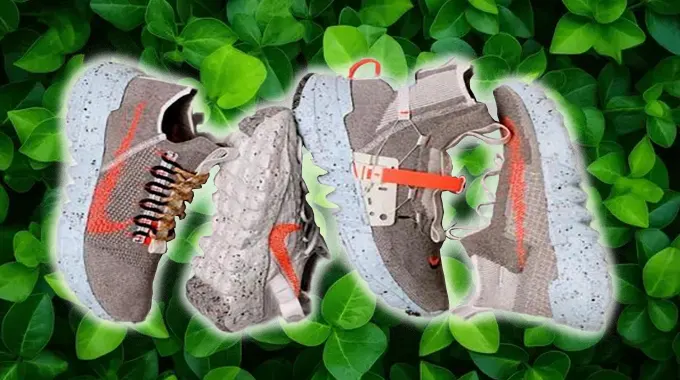Key Takeaways
- The significance of eco-friendly footwear in sustainable fashion.
- Understanding the entire lifecycle of sustainable shoes and the importance of responsible production and disposal.
- Consumer influence in pushing the shoe industry towards sustainable practices.
Understanding Sustainable Fashion
Sustainable fashion is cultivating a fashion industry that prioritizes environmental and social conscientiousness. This progressive approach extends beyond aesthetics to embrace ethical production processes, material sourcing, and end-of-life disposal that minimize environmental and societal harm. The concept thrives on the notion that the industry should reduce waste, reuse resources, and restructure products’ lifecycles. Product owners increasingly seek brands emphasizing longevity and ethical production, thus aligning their purchases with their values. A vital component of this approach is eco-friendly footwear, as shoes represent a significant portion of the fashion sector—historically contributing to environmental degradation. The fashion industry, once notorious for its wasteful practices, is being transformed as the spotlight falls on its environmental impacts, and consumers increasingly prefer brands that demonstrate a genuine commitment to sustainability.
The Rising Popularity of Eco-Friendly Footwear
The popularity of sustainable practices has brought eco-friendly footwear into the spotlight. Environmentally conscious consumers have come to understand the significant benefits of choosing shoes made from sustainable materials. Leading brands, such as Hey Dude, have embraced this trend. The demand for plant-based and recycled materials has created a thriving market for green footwear. Not only are sustainable shoes eco-friendly, but they are also often more comfortable due to their high-quality natural materials. They offer wearers the opportunity to make a fashion statement reflecting their conscientious living values. The merging of style with sustainability is captivating, attracting consumers eager to use their purchasing power to make a positive impact.
The Lifecycle of Eco-Friendly Shoes
True sustainability in footwear is realized when every phase of a shoe’s lifecycle is considered, from sourcing raw materials to manufacturing processes, from distribution and usage to disposal. Eco-friendly footwear aims to close the loop on waste, enhancing the product’s lifecycle through products through renewable materials, reducing energy consumption during production, and creating a product designed for disassembly and recycling. The end-of-life of a sustainable shoe is as crucial as its beginning; an eco-friendly shoe should pose the least burden on the environment after its useful life through recyclability or biodegradability. This cradle-to-cradle approach ensures that shoes walk lightly on the earth at every stage of their existence, and consumers have a vital role in supporting these complete lifecycle models by favoring brands that embody these principles.
Identifying Truly Sustainable Shoe Brands
Sifting through the myriad of brands claiming sustainability calls for a discerning eye to distinguish genuine efforts from greenwashing. A genuinely sustainable shoe brand is transparent about its manufacturing processes, energy sources, labor conditions, and the origins of its materials. Consumers today are more conscious about the environment and often pay attention to a brand’s reputation on sustainability before making a purchase. To ensure that their choices support genuine eco-friendly initiatives, it is recommended that they look for verified third-party certifications and reliable indicators of a brand’s environmental practices. By researching a brand’s sustainability practices, consumers can make informed decisions and choose brands that align with their values.
The Role of Innovative Technologies in Sustainable Footwear
Innovation is at the heart of the sustainable footwear revolution. Emerging technologies in material science are leading to the development of new, less environmentally damaging materials—think bio-fabrics and algae-based soles. Simultaneously, production processes are being overhauled to reduce carbon footprints, consume less water, and minimize waste. These technological strides help lessen the environmental impact and improve product quality and performance.
The Consumer’s Role in Promoting Sustainable Footwear
As consumers, the choices we make when purchasing footwear can significantly impact the market trends and encourage the industry to adopt sustainable practices. By opting for eco-friendly brands, we send a message that there is a demand for sustainable products, which can motivate manufacturers to shift their production practices. However, our responsibility continues. We need to continue to support these sustainable brands and advocate for the importance of sustainability in the footwear industry. The way consumers care for their footwear also impacts sustainability. Proper maintenance can extend the life of shoes considerably, reducing purchase frequency and the demand for production resources. Engaging with brands on social media and other platforms to express a preference for sustainability can also drive change. Consumers can contribute significantly to the drive for a greener future through deliberate, informed choices.
The Economic Implications of Choosing Eco-Friendly Shoes
The initial cost of purchasing eco-friendly footwear may be higher than conventional options, yet these prices reflect the ethical sourcing of materials and fair labor practices. Nevertheless, considering the longevity and reduced need for replacement costs balance over time. Investing in fewer, higher-quality pieces aligns with the sustainable practice of buying less overall. Moreover, the environmental cost of cheaper, non-sustainable options adds an unseen burden to the equation—making the economic benefits of environmentally friendly choices increasingly clear. Thus, when considering the actual cost of what we wear, it is prudent to factor in the price tag and the lifespan and environmental impact of footwear. Each sustainable purchase is an investment in the future—a future where the well-being of our planet is given the priority it deserves.
Tips for Transitioning to an Eco-Friendly Shoe Wardrobe
Transforming your shoe closet into a repository for eco-friendly choices doesn’t have to be daunting. A good starting point is to evaluate and pare down the existing collection, keeping only the pairs you genuinely need and donating what you don’t. When adding new shoe products to your collection, emphasize the materials’ quality and sustainable materials. Seek out brands that make public their commitment to environmentally responsible practices. Be patient and selective; buying fewer high-quality shoes is better for the allure of fast fashion’s fleeting trends. For fashion’s gradual but deliberate changes, you contribute to the sustainable fashion movement, promoting ecological health and justice with every step you take.
The Future of Footwear: Sustainability as a Norm
Looking ahead, sustainable practices in footwear are predicted to evolve from a niche market to an industry standard. The current consumer interest in sustainability is spurring a proliferation of footwear brands that hold environmental and social responsibility as core values. This shift is not just limited to niche markets but is also being adopted by mainstream brands, reflecting a change in consumer priorities. There is a growing belief that sustainable fashion can be the default practice rather than the exception, signaling a positive trend for the environment and future generations who will inherit our choices today.
Final Thoughts: The Impact of Collective Choices
The collective impact of individual consumer choices can be profound. Every sustainable purchase acts as a vote for the kind of world we want to live in. When many people embrace eco-friendly fashion, the industry must take notice and adapt. Your personal choices have the power to drive significant industry change. We all share the responsibility of stewarding the environment. With every eco-friendly shoe choice, we step towards a future where sustainability is not a luxury but a basic standard for all.












